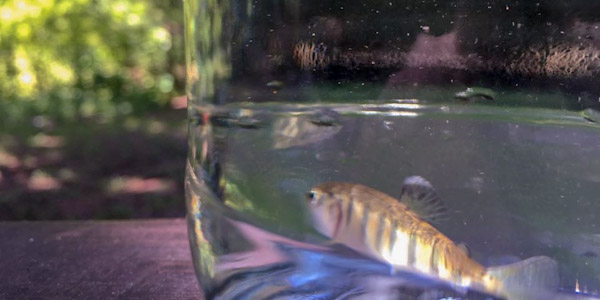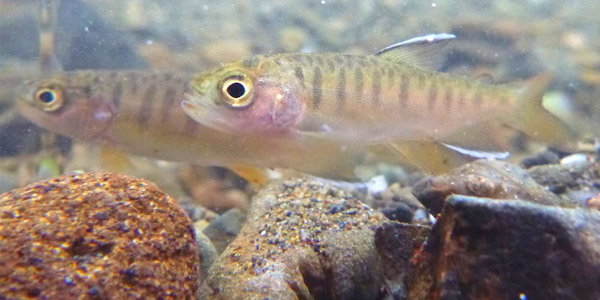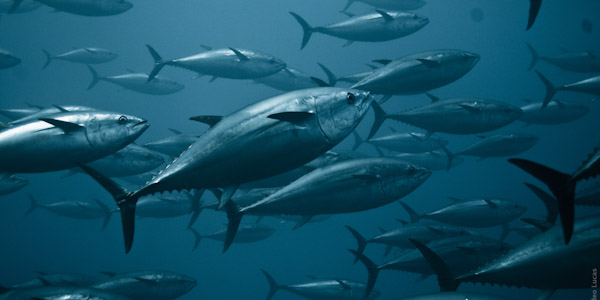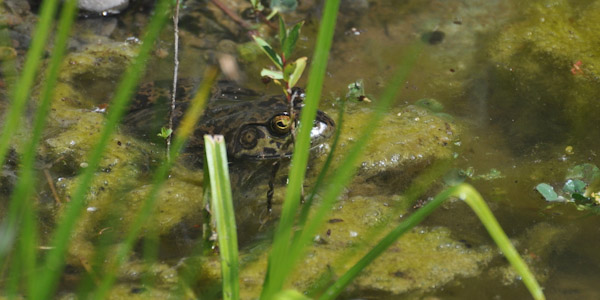Your monthly update from SPAWN
Right now, juvenile coho salmon are beginning a transformation to a life-stage that enables them to move from freshwater to saltwater! Known as smoltification, the transitioning smolts begin migrating downstream in March, peaking in May, after surviving in the stream habitat for nearly 16 months. Upon reaching the saltier water, they undergo a physiological adaptation to the new environment that includes changing color and losing their parr bars (dark, vertical bars). Their bodies also change to become more streamlined and buoyant. Even their attitudes change! As we make our way through May and into the summer months, we will continue to embrace our inner smolt—providing benefits to marine and freshwater ecosystems at all life stages.

Ocean-Going Coho Salmon Smolt Start Strong
The 2020 coho salmon smolt year in Marin County’s San Geronimo Creek is off to a big start! When coho salmon are born in the freshwater creeks, they spend 1-1.5 years growing and preparing for their adult phase in the ocean, where they will spend another 1.5 years before coming back to lay their eggs in the freshwater system where they were born. The process, known as “smoltification,” prepares salmon for saltwater intake and the ocean environment—changing physiologically and morphologically, internally and externally. Since installing the traps on April 17, SPAWN has come across a little over 2,000 coho smolts, marking a significant count for this endangered species! With our current numbers and only being half way through the season this is looking like a promising outmigration year.

Volunteers Lend a Helping Hand During COVID-19
Our fantastic volunteer crew has found ways to continue to support our work at a distance as they shelter-at-home, and we are so grateful to long-time SPAWN volunteer Dean Hanson who has designed and built rodent-exclosure cages for every table in both of our nursery shade houses! Thank you, Dean! Our dedicated nursery volunteers are also working remotely on building more benches for the nursery. Since our inception in 1999, SPAWN's work has been made possible by volunteers and we are so grateful for their willingness to continue to help us during these trying times. Stay tuned for more information about upgrades to the nursery!

4-Acre Property Purchased for Salmon Protection
SPAWN recently acquired a four-acre property on the most important un-damned headwater tributary of Lagunitas Creek, which hosts the highest spawning population of critically endangered coho salmon. The purchase will allow us to promote the long-term survival of coho salmon and their nests, known as redds, and to improve water quality for the safety of San Geronimo Valley residents. “With one of the highest densities of redds found anywhere in the 101 square-mile watershed, this property has high ecological value for salmonids,” said Executive Director Todd Steiner.
 Photo by California Sea Grant
Photo by California Sea Grant
ICYMI: Watch the 'Restoring Roy's Pools' Webinar
This month community members joined SPAWN online to learn and ask questions about an innovative, collaborative project in the San Geronimo Valley that benefits both landowners and salmon. The Roy’s Pools Fish Passage and Floodplain Restoration Project involves removing the highest priority fish barrier in central California, creating and restoring approximately 5 acres of creek habitat with the construction of 0.25-mile long floodplain corridors along the former San Geronimo golf course property. The project will provide year-round access to critical habitat for salmon, create valuable floodplain corridors for terrestrial wildlife movement, greatly increase the amount of trees for nesting birds, and more. Click here to watch the webinar and learn more about this exciting project!

What's Blooming in the Nursery? Western Columbine
The Western columbine (Aquilegia formosa) is a pretty perennial plant that grows 2-3 feet tall and one foot wide before displaying bright yellow and red flowers in the spring. The flowers dangle from the tips of branches that grow over the top of blue-green, deeply lobed leaves. Western columbine is part of the buttercup, or Ranunculaceae, family. The genus name Aquilegia comes from the Latin word for eagle (aquila) named for petals on the top of the flower that are said to resemble eagle talons. The species name formosa is the Latin word for beautiful. The plant is native to much of western North America, and the flowers attract hummingbirds. It can grow in sunny spots along the coast but does best in partial shade. Western columbine is a beautiful addition to gardens set in an oak woodlands or mixed forest. It often grows in riparian areas and other moist locations and does best with occasional summer water.

On Earth Day’s 50th Anniversary, Activists Call on U.S. to Stop Environmental Rollbacks
April 22 marked the 50th anniversary of Earth Day — five decades of global, grassroots action to demand a better planet for wildlife, their habitats, and humans. Today, however, the fight to protect wild animals and their ecosystems continues with increasing urgency. The federal government of the United States has spent the past four years deconstructing our nation's critical wildlife protection laws – and even more so in recent months while the public's attention has been diverted. We asked our supporters to join our Digital Earth Day Rally and express why they want the U.S. to stop rolling back environmental protections; their powerful actions became the voices for many species and wild places that they think are worth saving for the next 50 years, and for future generations.

Groups Sue to Stop Trump Administration From Allowing Deadly Gear in Tuna Spawning Grounds
At the very same time that thousands of Western Atlantic bluefin tuna are gathering in their only known spawning grounds in the Gulf of Mexico, conservation groups including Turtle Island Restoration Network, SPAWN's parent organization, filed a lawsuit to stop a new Trump administration rule that could decimate the species’ population. The groups are challenging a new rule the National Marine Fisheries Service passed on April 2 that removes critical restrictions on pelagic longline fishing gear, which can stretch five to 40 miles and have as many as 30 hooks per mile. The restrictions applied in bluefin tuna spawning grounds during April and May — peak spawning time.

More Than 300 Groups Call on Congress to Bail Out People, Not Polluters
SPAWN's parent organization Turtle Island Restoration Network joined more than 300 groups in calling on Congress to demand that federal relief money be directed to people affected by the COVID-19 crisis and not to fossil fuel polluters. Citing the fossil fuel industry's successful lobbying of Trump's Environmental Protection Agency to suspend enforcement of pollution safeguards, the letter calls on Congress to exclude the fossil fuel industry from receiving loans and other federal support, ensure affected fossil fuel workers are provided with assistance and labor protections for weathering a job transition, and bar financial institutions receiving loans or loan guarantees from using that money to finance fossil fuel infrastructure projects.

Photo of the Month: Bashful Bullfrog
As April showers bring May flowers and budding plants to SPAWN’s restoration sites in the Lagunitas Creek Watershed, they also bring wildlife sightings like this bullfrog (Rana catesbeiana). SPAWN's Executive Director Todd Steiner snapped this photo after hearing a splash in the upstream section of Lagunitas Creek at our Tocaloma floodplain project. Bullfrogs are large frogs native to North America east of the Rocky Mountains. Bullfrogs have been observed in Lagunitas Creek and its tributaries, and are abundant in District reservoirs and the former San Geronimo Golf Course ponds. They eat any animal they can fit in their mouths, and have been implicated in the decline of red-legged frogs and other native aquatic species.